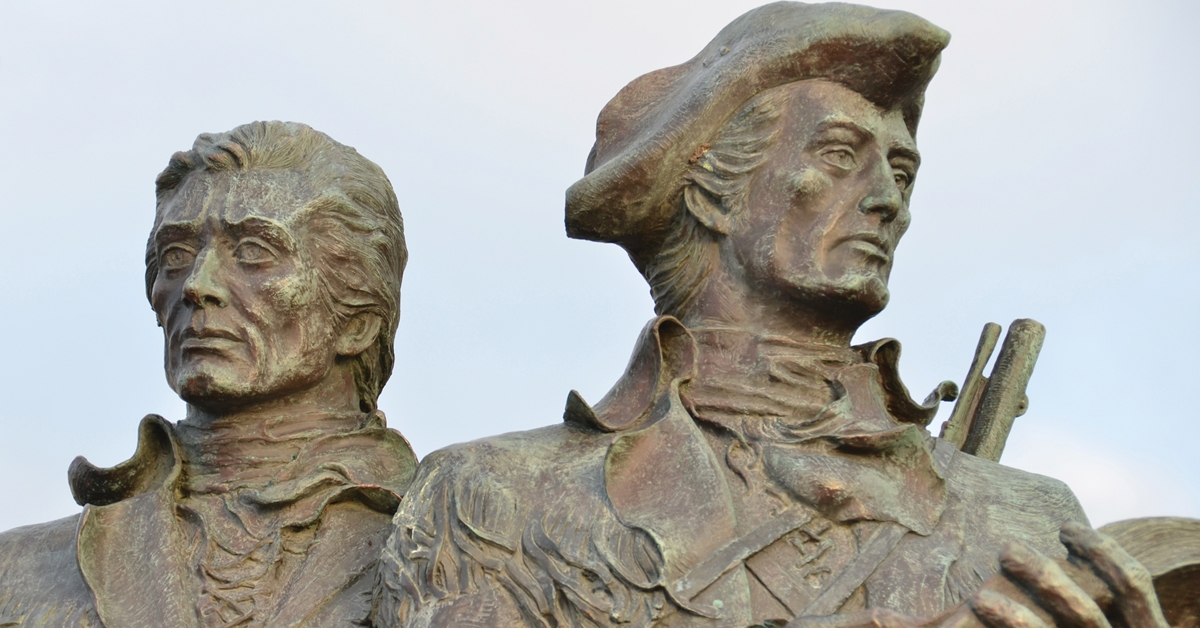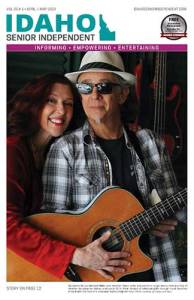July 4, 1805, marked one of the most challenging parts of Lewis and Clarke’s two-year journey across the West. After their mid-June discovery of a series of huge cascades near what is now Great Falls, Mont., the Corps of Discovery spent the next two weeks planning a route and building wagons to tote their boats and equipment around the falls.
The 29th birthday of the country found them putting the finishing touches on the construction of an iron-framed boat. Captain Lewis had commissioned the parts for the craft in Harper’s Ferry, Va., which the crew had hauled all the way across the country.
Lewis had designed the boat himself. Once the iron staves were assembled into a framework, he planned to sew together animal hides to stretch over its skeleton, making a vessel that could carry up to four tons of material, but when empty could be easily hoisted by four men.
On Independence Day, 1805, Lewis recorded this entry in his journal:
“Our work being at an end this evening, we gave the men a drink of sperits, it being the last of our stock, and some of them appeared a little sensible of it’s effects the fiddle was plyed and they danced very merrily until 9 in the evening when a heavy shower of rain put an end to that part of the amusement tho’ they continued their mirth with songs and festive jokes and were extreemly merry untill late at night. we had a very comfortable dinner, of bacon, beans, suit dumplings & buffaloe beaf &c. in short we had no just cause to covet the sumptuous feasts of our countrymen on this day.”
It’s interesting that among the 33 men (32 after Charles Floyd died in August of 1804), at least two were fiddlers—Kentuckian George Gibson and Metis Pierre Cruzatte.
The journals that Lewis and Clark and a few enlisted men kept are delightfully punctuated with scenes like the one above in which the men put aside the drudgery of their mission and had a drink or two and enjoyed some fiddle music.
They had spent the previous Fourth of July on the Missouri at the confluence of the Missouri River and a tributary the Corps dubbed “Independence Creek,” in honor of the nation’s 28th birthday. On that occasion, the journals record “an extra gill” of whiskey for each man, but no mention of fiddles.
Thanks to the foresight of Lewis and Clark to include a couple of fiddlers in their ranks, Montana and Idaho can trace their old-time fiddle traditions back to 1805—impressively far for states that didn’t enter the Union until 1889 and 1890, respectively.
Metis Indian scholar Nicolas Vrooman theorizes that having fiddles with them in fact helped ensure their survival when they encountered indigenous peoples along the way. Invariably, impromptu “jam sessions” resulted, in which the Natives drummed and Cruzatte fiddled, while men from both cultures danced. Vrooman refers to the strategy as “fiddle dance diplomacy.”
Fiddle music has become a central element in Fourth of July celebrations across the U.S. The annual 4th of July celebration at Fort Missoula in Montana, for example, often features bands playing old-time fiddle music. The Festival of American Fiddle Tunes in Port Townsend, Wash., and the Fiddles and Fireworks festival in Brunston, Mo. are both scheduled to occur over the Independence Day celebration.
We can thank early advocates like Lewis and Clark, with their impromptu, July Fourth fiddle fest in 1805 on the banks of the Missouri River.
Unfortunately, neither captain nor any of the others who kept journals thought to record the titles of any tunes the Discovery fiddlers played along their journey, but it is not out of the question that among their regular repertoire would have been a fancy tune from the 1780s, called “The Anacreontic Song.”
Its melody became the basis for probably the best known American song ever, penned by Francis Scott Key in 1814 as he watched the bombardment of Fort McHenry. Scott’s poem proved popular and was matched up to the “Anacreontic” melody to produce “The Star Spangled Banner.” ISI












